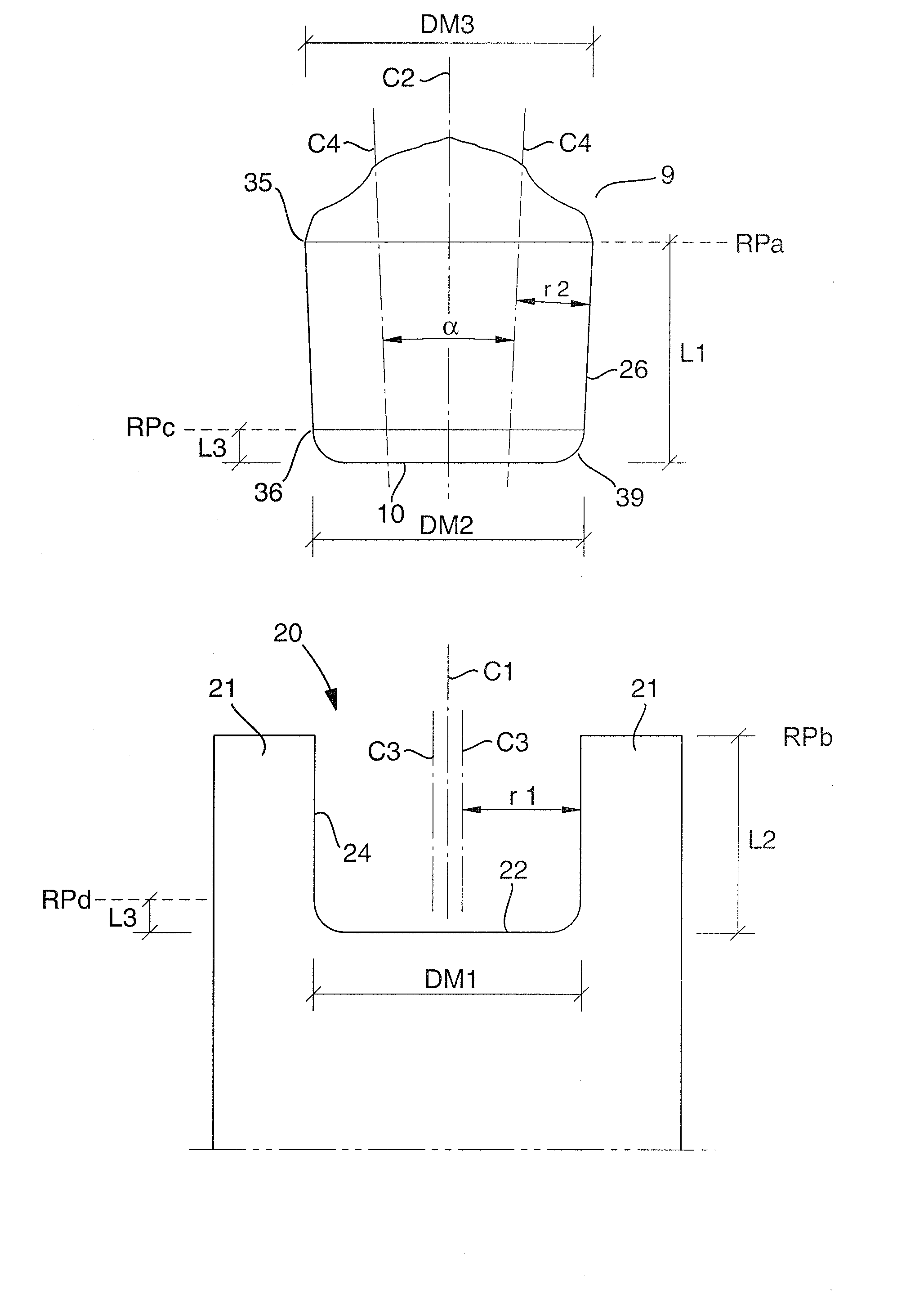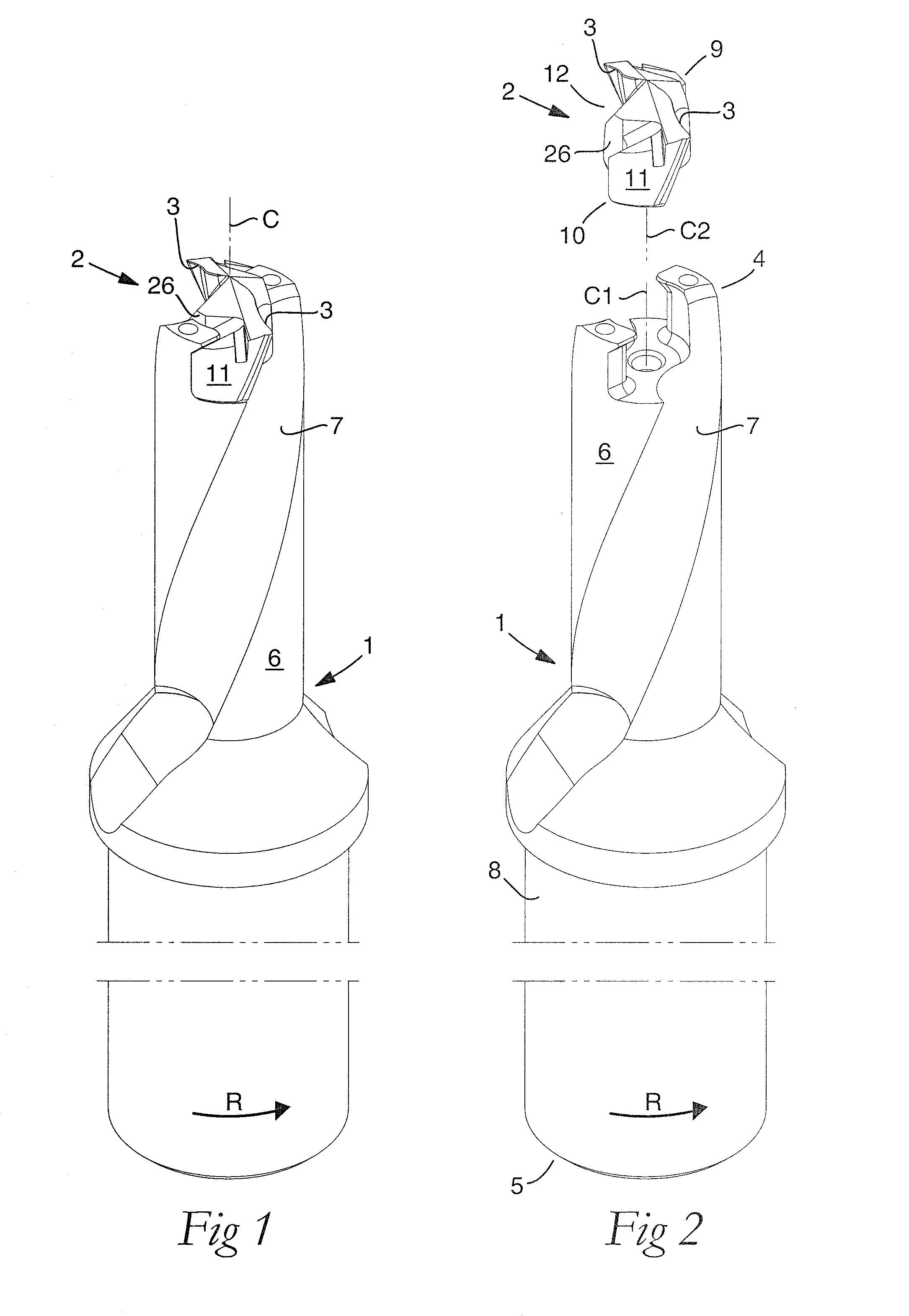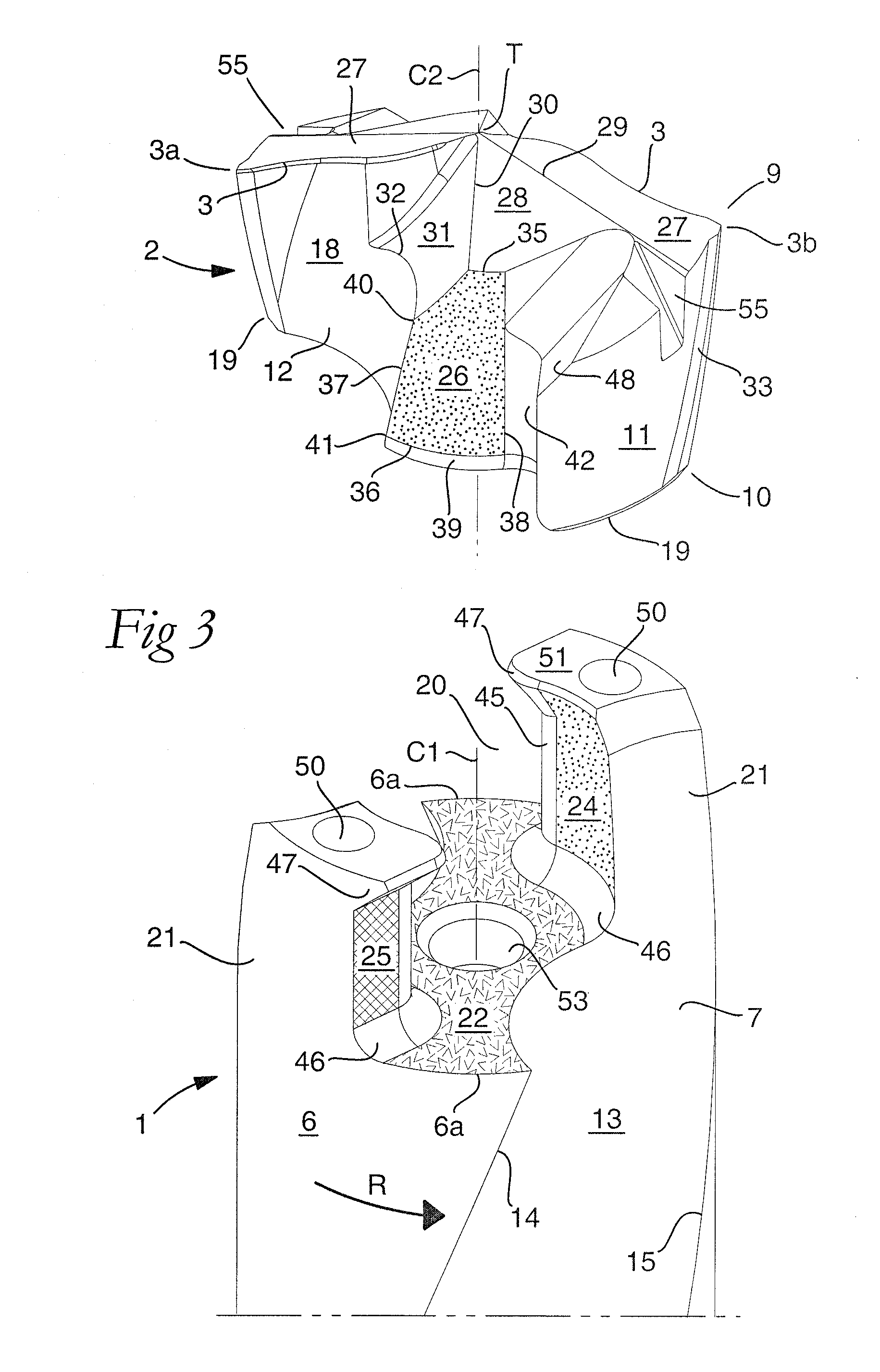Drilling tool for chip removing machining as well as a loose top therefor
a technology of drilling tool and loose top, which is applied in the direction of twist drill, manufacturing tools, cutting inserts, etc., can solve the problems of increasing the cost of material consumption, and increasing the difficulty of industrial series manufacturing, so as to improve the drilling effect, reduce the consumption of expensive materials, and improve the inherent elasticity of branches
- Summary
- Abstract
- Description
- Claims
- Application Information
AI Technical Summary
Benefits of technology
Problems solved by technology
Method used
Image
Examples
Embodiment Construction
[0040]In the following description and the claims, a number of cooperating pairs of surfaces of the basic body and the loose top, respectively, will be described. When these surfaces are present on the basic body, the surfaces are denominated “support surfaces”, while the corresponding surfaces of the loose top are denominated “contact surfaces” (for example, “axial support surface” and “axial contact surface”, respectively). Furthermore, it should be pointed out that the loose top includes a rear end in the form of a plane surface, which serves as an axial contact surface for pressing against an axial support surface in the basic body. Depending on the context, this surface will be denominated either “rear end” or “axial contact surface”. In the drawings, the cooperating surfaces contacting each other in the operative state of the drilling tool are shown by similar surface patterns.
[0041]The drilling tool shown in FIGS. 1 and 2 is in the form of a so-called twist drill, comprises a...
PUM
| Property | Measurement | Unit |
|---|---|---|
| radial distance | aaaaa | aaaaa |
| γ | aaaaa | aaaaa |
| diametrical dimension | aaaaa | aaaaa |
Abstract
Description
Claims
Application Information
 Login to View More
Login to View More - R&D
- Intellectual Property
- Life Sciences
- Materials
- Tech Scout
- Unparalleled Data Quality
- Higher Quality Content
- 60% Fewer Hallucinations
Browse by: Latest US Patents, China's latest patents, Technical Efficacy Thesaurus, Application Domain, Technology Topic, Popular Technical Reports.
© 2025 PatSnap. All rights reserved.Legal|Privacy policy|Modern Slavery Act Transparency Statement|Sitemap|About US| Contact US: help@patsnap.com



